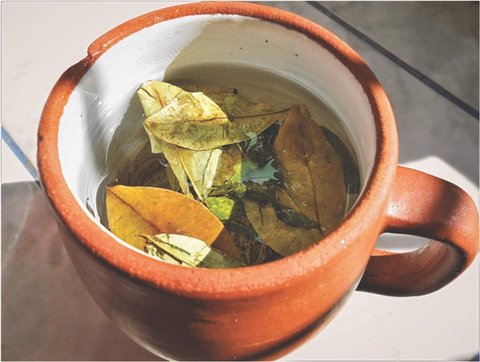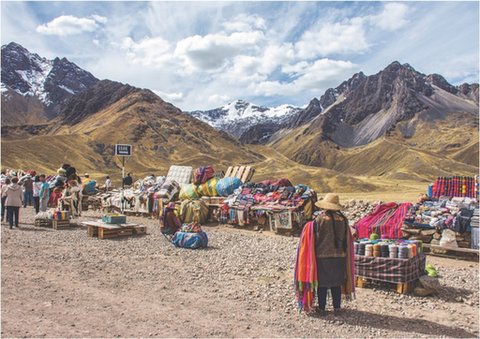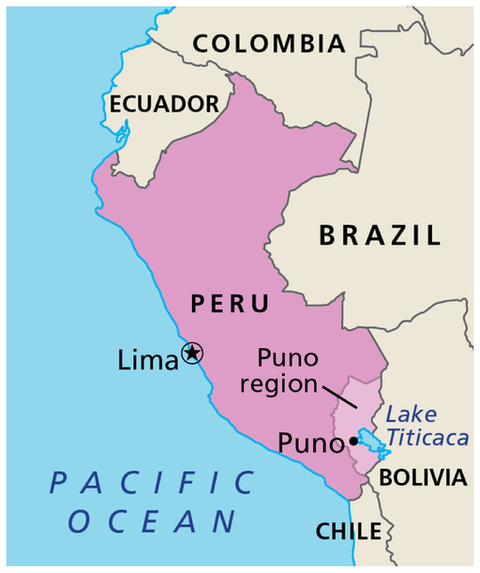IgrewupinCanadaandintheUnitedStates.Iwasalwaysinterestedinlanguages.InthecommunitieswhereIlived,manylanguageswerespokenallthetime.Ilovelanguagessomuch,Ibecamealinguisticanthropologist.That’sapersonwhostudieslanguagesfromaroundtheworld.I’minterestedinhowlanguagesareused,howtheychange,andhowtheyconnectustothepeoplearound us.
OnedaywhenIwasincollege,Ihadacrazyidea.Wouldn’titbeinterestingtodiscoveranewlanguage?Iknow.Itsoundscrazy.Yet,it’s possible.
Languagesdon’tstaythesame.Overtime,theychange.Somechangetothepointwhereanewversioniscreatedthatisnotlikeanythingelsethathaseverbeenspokenbefore.Tofindsuchathing,youhavetobeattherightplaceattherighttime.IhadanideawhereImightlook:Peru,inSouth America.
InaregionofPerucalledPuno,peoplespeaktwoindigenouslanguages.Anindigenouslanguageisalanguagethatisnativetoaspecificplace.Itisspokenbythepeoplewholivethere.Puno’slanguagesareQuechuaand Aymara.
InPuno,peoplehavebeenspeakingQuechuaandAymaraforcenturies.Today,morethan40percentofthepeopletherespeakQuechua.Morethan30percentspeakAymara.TherestspeakSpanish.Youheartheselanguagesinthemarketandatfestivalsandcelebrations.ButIwonderedif,overtime,QuechuaandAymaramighthaveblendedtogetherheretobecomeanew language.


Learn a little Quechua or Aymara.Try these useful words and phrases:
Quechua:
Imanaylla kashanki?
(i‑ma‑naa-ya ka‑shan‑kee)
Aymara:
Kamisaraki
(ka-mee-sa-ra-kee)
English:
How are you?



PunooverlooksLakeTiticaca,thelargest,deepestlakeinthe Andes.
LivingtheHighLife
Totestmytheory,Ipackedmybackpackwithnotebooksandmybestaudiorecorderand microphone.
InthesouthernmostpartofthePeruvianAndes,borderingBolivia,istheAltiplano.InSpanish,thismeans“highandflat.”It’sahigh,dryplateau,hometosnow‑cappedmountains.ItisalsohometoLakeTiticaca,thehighestnavigablelakeinthe world.
ThecommunitiesinPunoaremorethan3,800meters(approximately2.5miles)abovesealevel.Youknowthatthisishighbecauseyoucanfeeltheeffectsonyourbody.There’slessoxygenupthere.Itmakesbreathing hard.

coca tea


Aymara:
Walikiwa
(wa‑li‑kee-wa)
Quechua:
Allinmi
(al‑yeen‑mee)
English:
Iam good.
WhenIfirstarrivedinPuno,Icouldfeelmyselfbreathingfasterandfeelingdizzy.LaterIfeltnauseousandhadaheadache.Theseareallsymptomsofwhatpeopletherecallsorrocha,oraltitudesickness.I quicklylearnedthelocalremedyforthis:coca tea.Icarriedtheleaveswithmeanddranktheteaintheevenings.Afterafewdays,mybodyadjustedtothealtitude,andIfelt better.
Thatwasn’ttheonlythingIhadtoadjustto,though.Beinghigherintheskyalsomeansthatyouhavelessozoneprotectingyoufromthestrongultra violetraysofthesun.PeopleintheAltiplanonevergooutwithouttheirbigsunhatsthathelpprotectthemfromthesun’sstrong rays.

Mountainsloominthedistanceofthisroadside market.

ECUADOR
COLOMBIA
BRAZIL
CHILE
PERU
Lima
Puno
region
Puno
Lake
Titicaca
PACIFIC
OCEAN
BOLIVIA


